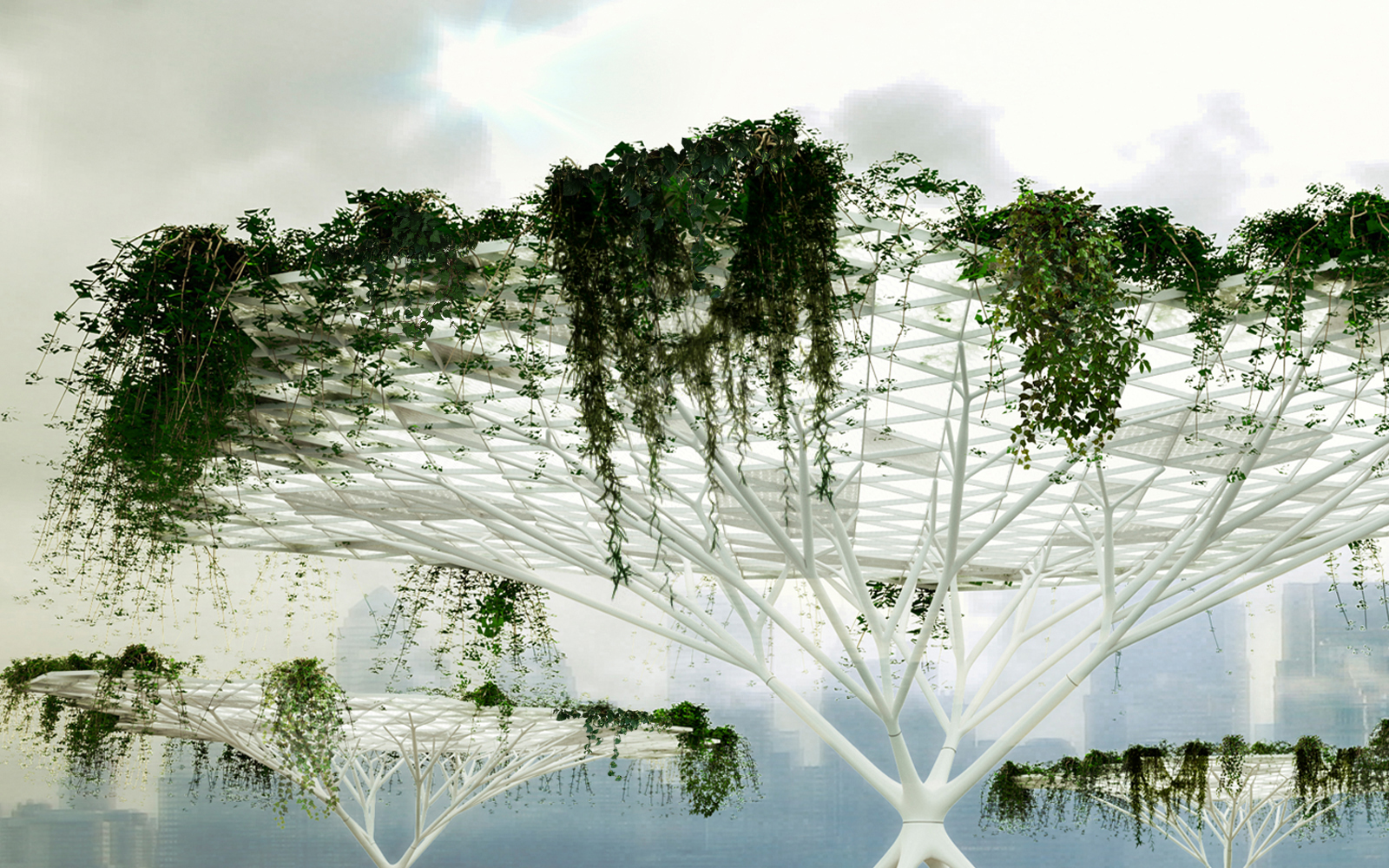
"tree-like urban structure"
design : Libero Rutilo & Samuel Fournier
year : 2017
credits : (designlibero & liwe)
A tree-like urban structure composed of a force optimized branched construction, which supports an inverted grid shell roof. A flat regular net is pressured upwards while being deformed by the tension of the branch vectors pulling downwards. This results in an optimized tensile system that can be reversed for compression into a highly efficient supportive structure, free of bending moments. Using the analogy of a tree with the roots above the ground, the beams are split into multiple branches, spreading supporting points across the roof, and widened base footings distributed to foundation points provide lateral stability. The smoothed branching structure is an assembly of different molded elements, made of natural fiber reinforced biopolymer composite. The roof grid shell allows the use of more common materials, such as aluminum profiles, and CNC machined connection nodes. Laminated wood beams are also an option.
The watertight roof provides shade and shelter; this large bowl-formed surface area has rainwater collection potential. The fluid drains toward the center, and flows down into the central branches, which are filled with active coal and sand. On its journey down to the tanks, the rainwater receives an initial filtration and is purified prior to being introduced in the system. The purified water is then fed into tanks, placed either above or under the ground. A pump system then feeds the different aqueous fluid systems and networks. Another tank and network contains water with the desired algae. All waters are pumped up into the peripheral branches, to be used on their way, and on the roof to feed plantations, or to provide UV lighting to the algae. Each system has its own closed vein network and tank.
A giant urban object, placed in the public space, with the beauty of its nature-like appearance offers a pleasant experience both to humans and animals, providing a fresh breeze, a shadowed and covered area, together with services. The list of its multiple functions can be extended and depends on the systems integrated. The Basics are: Roof, shelter and shade, with rainwater collection. Secondary: Rainwater storage, filtration and distribution, Electricity production, Algae and Plant cultures: producing biomass to be used as food, fuel and energy, and catching CO2 through photosynthesis to liberate oxygen. The collected electrical energy from the PV is stored in batteries, hidden underground and can be used to feed the pumping system, a recharging station for electric vehicle, electronic devices, and to provide urban lighting at night with distributed LED lights on the structure. On hot days, the filtered rainwater can be sprinkled out from nozzles fixed on the branches, to provide entertainment and keep it cool. This water can receive an additional filtration to feed a drinking water